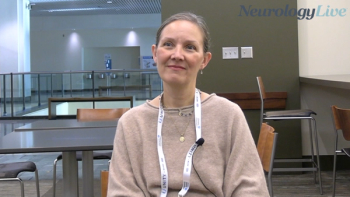
SMA Treatment Apitegromab Shines in Phase 2 TOPAZ Study
A majority of patients across all 3 cohorts maintained or improved their motor function shown by changes from baseline in Revised Hammersmith Scale scores.
Treatment with apitegromab (SRK-015; Scholar Rock) further demonstrated proof-of-concept in recently published topline results from the phase 2 TOPAZ clinical trial (NCT03921528) in patients with spinal muscular atrophy (SMA) type 2 and 3.1
A majority of the 23 patients (57%; n = 13) with ambulatory type 3 SMA who received a 20-mg/kg dose monotherapy of apitegromab in conjunction with nusinersen (Spinraza; Biogen) across cohort 1 maintained or improved their motor function, as reflected by a greater than 0-point change from baseline in Revised Hammersmith Scale (RHS). The investigators also documented that 22% of patients (n = 5) in cohort 1 attained a greater than 3-point increase from baseline in RHS. Additionally, there was a 0.3-point decline in mean change from baseline in RHS across the entire cohort.
"These top-line 12-month data provide further support towards establishing apitegromab as a potential first muscle-directed therapy for patients with SMA,” Yung Chyung, MD, chief medical officer, Scholar Rock, said in a statement.1 “The findings also offer important insights into myostatin biology and our scientific approach of targeting the latent forms of growth factors. We look forward to advancing the development and investigation of apitegromab as we plan to initiate a pivotal trial in SMA by the end of 2021 and explore its potential in additional disease areas.”
Cohort 2, which included 14 patients with type 2 and non-ambulatory type 3 treated with 20-mg/kg apitegromab, observed a mean change from baseline in Hammersmith Functional Motor Scale Expanded (HFMSE) of a 0.6-point improvement. The majority (64%; n = 9) of patients achieved at least a 1-point increase in HFMSE and 29% (n = 4) of patients achieved at least a 3-point increase in HFMSE from baseline. These patients, who were already receiving treatment with nusinersen initiated at age 5 years or older, also observed the potential durability of effect with apitegromab for up to 12 months of treatment.
READ MORE:
Seventeen patients included in cohort 3 were randomized 1:1 to receive the low dose (apitegromab 2 mg/kg) or high dose (apitegromab 20 mg/kg) and further demonstrated improvements in motor function relative to what was observed at the 6-month interim analysis. All told, there was a 7.1-point and 5.3-point mean improvement for the 20 mg/kg and 2 mg/kg dose arms, respectively, in change from baseline in HFMSE score.
Additional results from cohort 3 showed that the majority (59%; n = 10) of patients achieved at least a 5-point increase in HFMSE and 35% (n = 6) of patients achieved greater than a 10-point increase in HFMSE over baseline. Researchers noticed a dose response that was consistent with the pharmacodynamic results.
No safety signals for apitegromab were identified as of the 12-month top-line analysis. The 5 most frequently reported treatment-emergent adverse events (TEAEs) were headache (24%), pyrexia (22%), upper respiratory tract infection (22%), cough (22%), and nasopharyngitis (21%).
"These 12-month results from the phase 2 apitegromab TOPAZ trial have built upon the previously announced exciting 6-month interim results,” Thomas Crawford, MD, professor of neurology, Johns Hopkins School of Medicine and lead investigator of the TOPAZ trial, said in a statement. “There looks to be promising potential for a muscle-directed therapy that will complement the unmet need still evident, and likely emerging, in many individuals with SMA who receive SMN-enhancing therapies. Though much work remains to be done, I believe the results are wonderful news for the SMA community, and I am enthusiastic about the potential that apitegromab may offer for further meaningful functional improvements.”
Scholar Rock just recently
REFERENCES
1. Scholar Rock announces positive 12-month top-line results from the TOPAZ phase 2 clinical trial evaluating apitegromab in patients with type 2 and type 3 spinal muscular atrophy (SMA). News release. April 6, 2021. Accessed April 7, 2021. https://investors.scholarrock.com/news-releases/news-release-details/scholar-rock-announces-positive-12-month-top-line-results-topaz
2. Place A, et al. Apitegromab, a novel high-affinity anti-proMyostatin monoclonal antibody for treating spinal muscular atrophy: results of a phase 2 interim analysis. Presented at MDA Clinical and Scientific Conference 2021; March 15-18.
Newsletter
Keep your finger on the pulse of neurology—subscribe to NeurologyLive for expert interviews, new data, and breakthrough treatment updates.


































